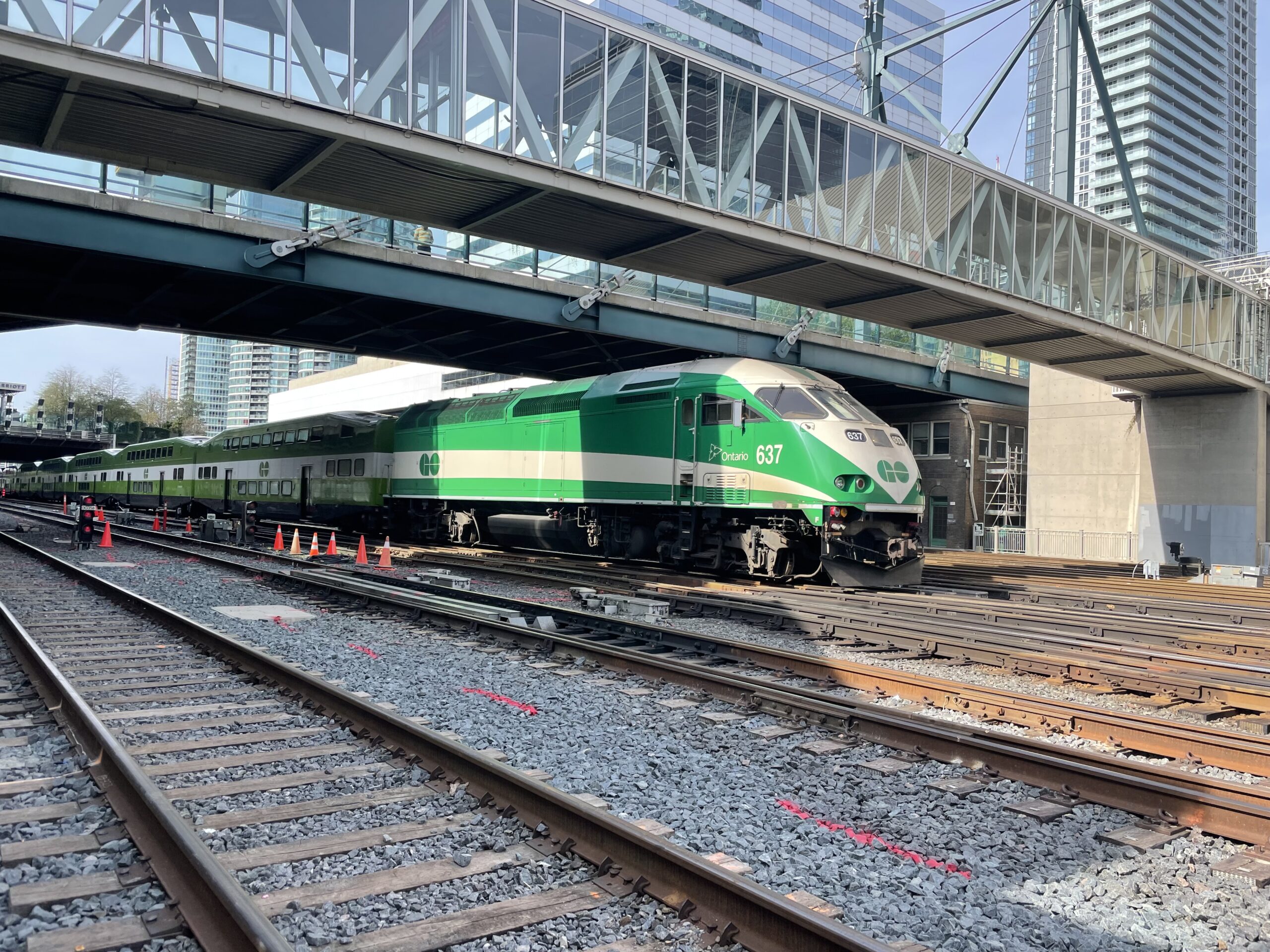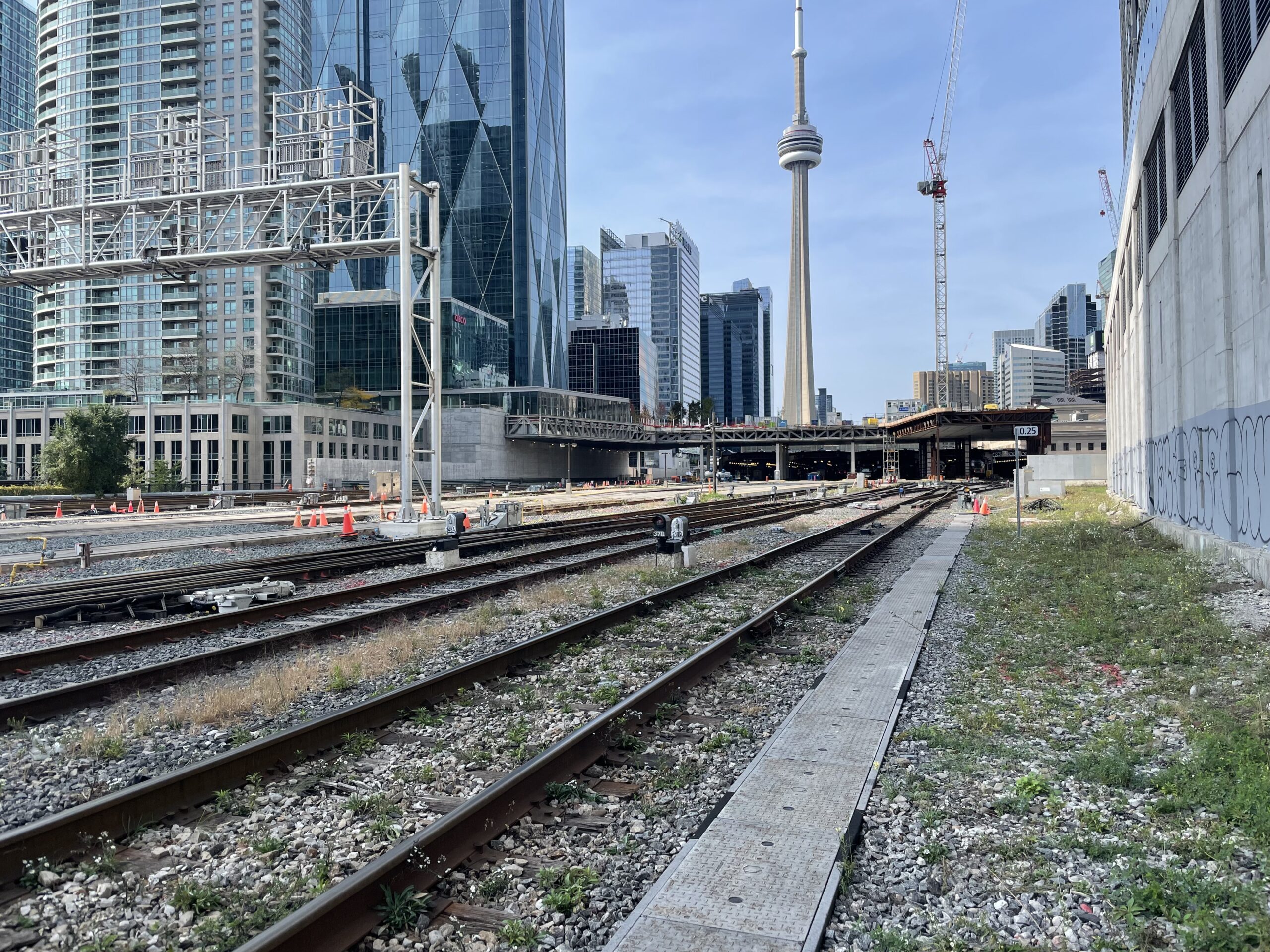Union Station is the largest and busiest rail passenger facility in Canada, functioning as a transportation hub for passenger, commuter and freight trains. Union Station currently handles almost 40 million passengers a year. This number is expected to double over the next 20 years. Daily ridership is approaching 160,000 and Peak Period arrivals at Union Station are close to 45,000. VIA Rail and Amtrak are also expecting increased usage of the station. Freight traffic continues to pass through Union Station from both Canadian National (CN) and Canadian Pacific (CP) networks.
Union Station and the adjacent Rail Corridor is known as the Union Station Rail Corridor (USRC). The USRC is some 6.4 km long and consists of a complex network of approach tracks, passenger platforms and four Interlocking’s at Cherry Street, Scott Street, John Street and Bathurst Street. It has 14 station tracks with platform access, and more than 180 signals, 250 switch machines, 40 km of circuited track and all associated infrastructure.
Within the USRC, TTR directs USRC rail operations using Train Movement Directors (TMDs) located at the three control offices, in the John, Scott and Cherry Street towers, and maintains the facility with a force of maintainers located throughout the territory. The TTR staffs the towers 24 hours/day-365 days/year. The TMDs coordinate all train movement by voice communication and for movements through John, Scott and Cherry, operate a vintage electro mechanical signal system (built in the 1930’s) by manually manipulating levers to line switches, set signals and clear routes. Track protection is achieved by physically placing “cans” over the levers to prevent their use during maintenance activities.
In recent years, the Union Station Railway Corridor has been undergoing major construction phases to renew the signalling, electrical and communications equipment to modern standards; provide, through redundancy, fault tolerance such that operational impacts of failures are minimised, highly localised and contained; and remove service interruptions, speed restrictions and operational bottlenecks imposed and experienced due to equipment, interfaces and technological restrictions and in so doing, improve capacity and throughput of the USRC. The objective allow for a better customer experience for Go Transit passengers.
Works are expected to be fully finished and ready to receive the next generation of passengers in 2019/2020, with upgraded signals and track, a new roof and glass atrium over the passenger platforms, new staircases and access points as well as a completely new underground shopping concourse within the main building below the tracks.


